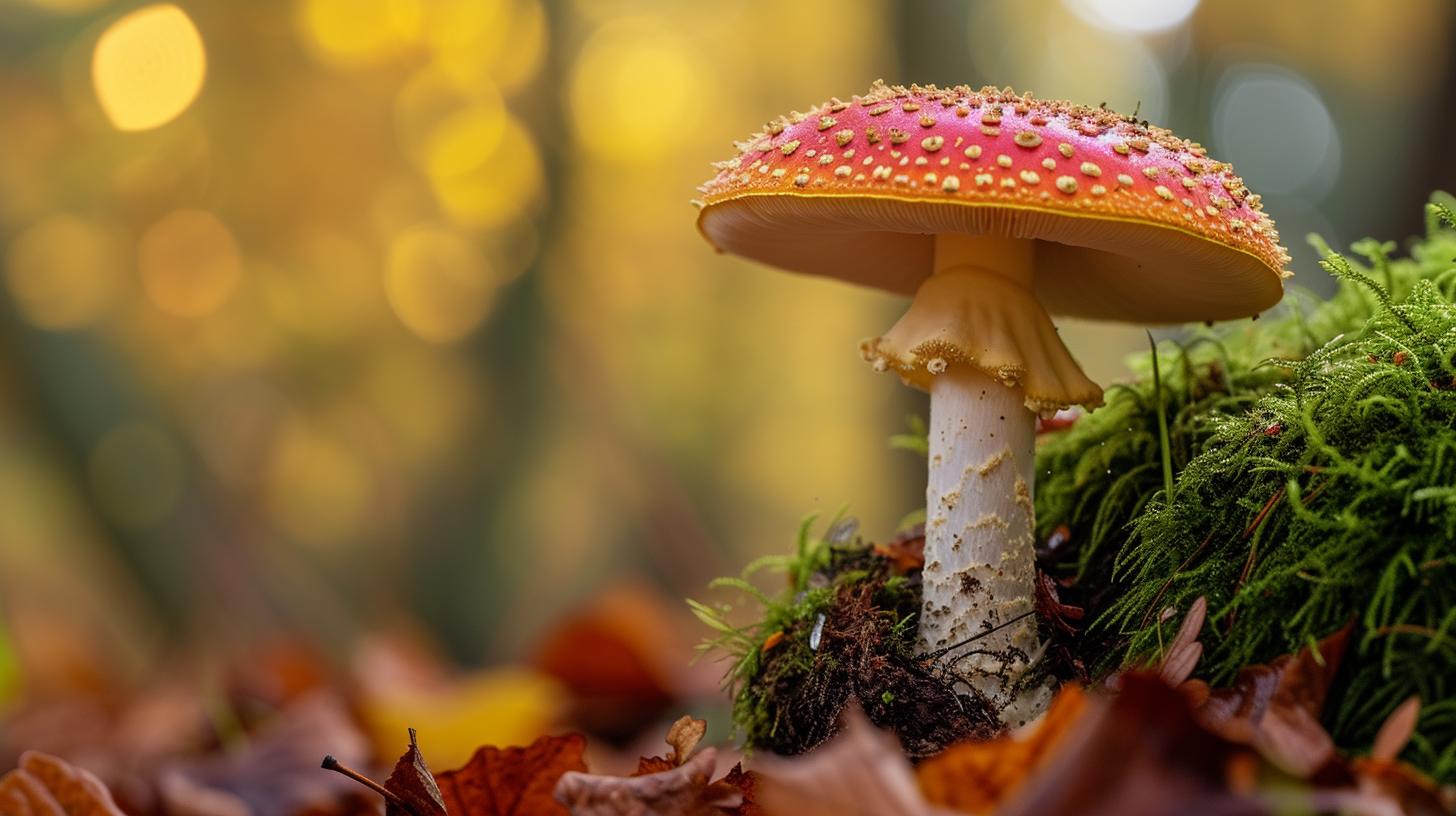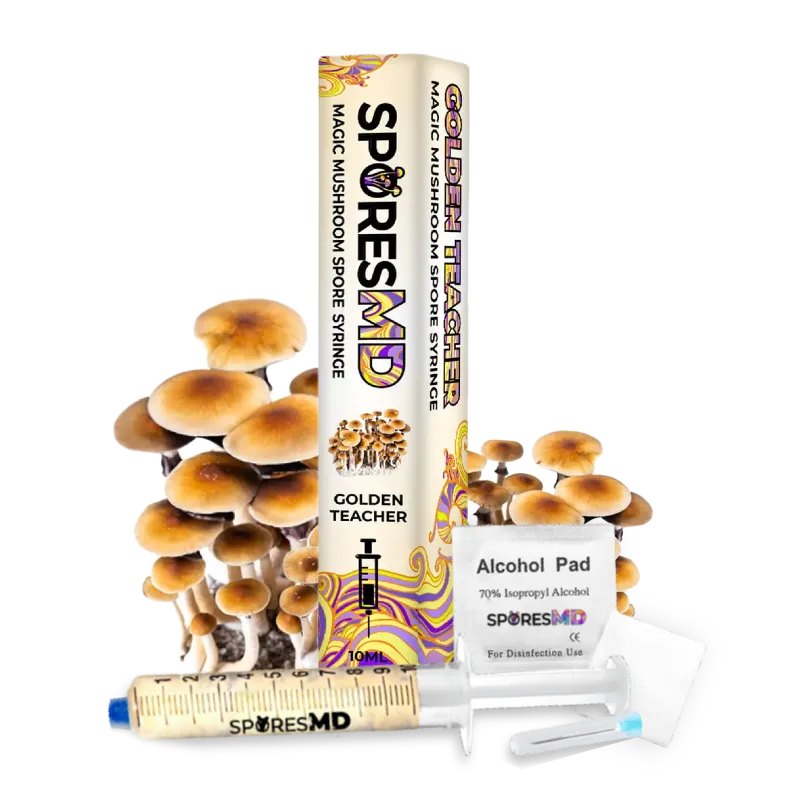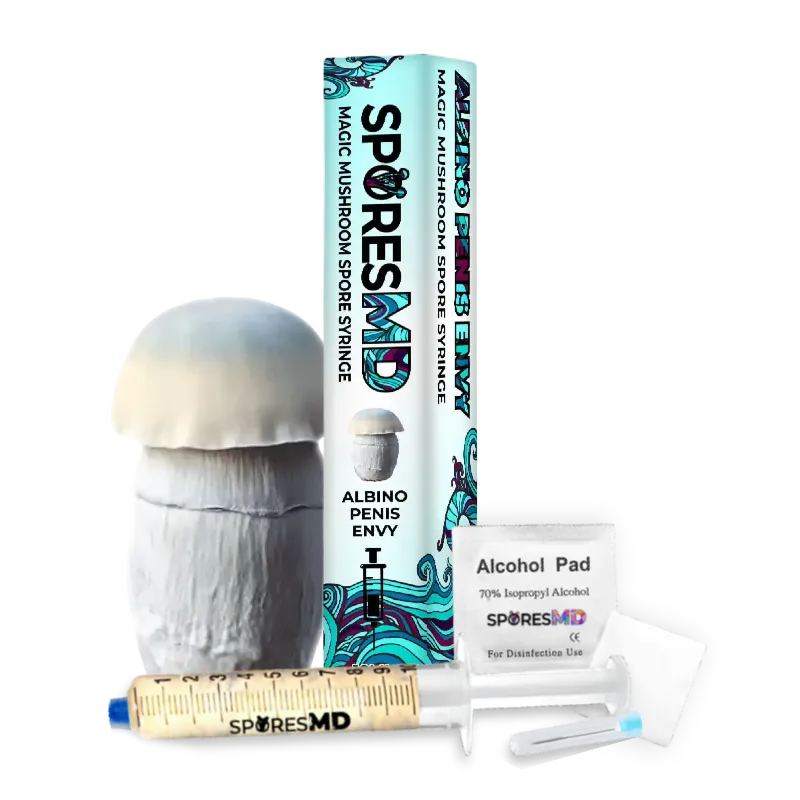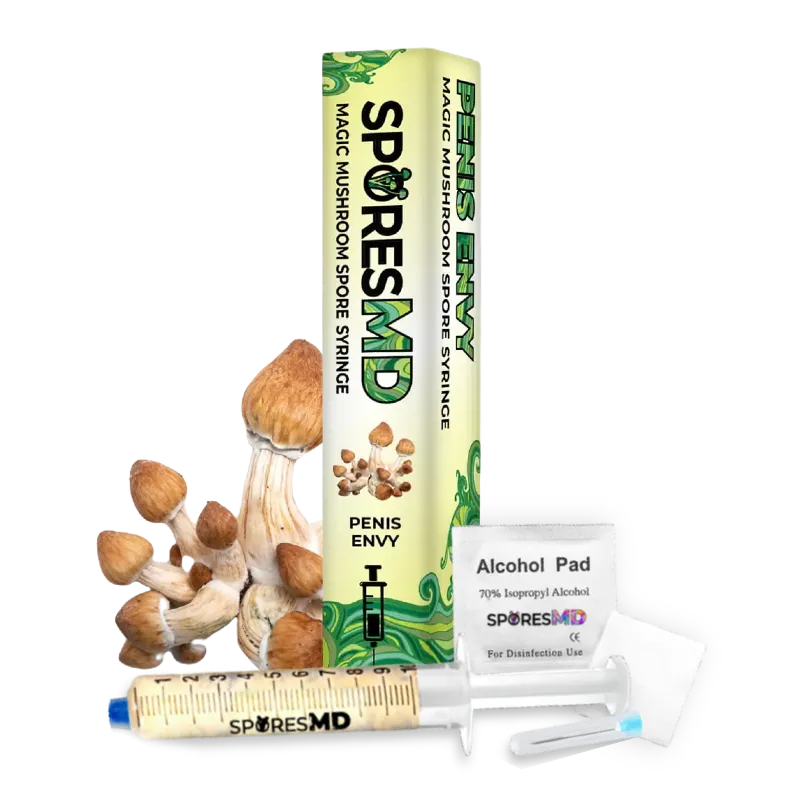Venturing into the world of mushroom cultivation? You’re likely to encounter two key terms: mushroom spores (specifically spore syringes) and spawn. It’s easy to get tangled in the jargon, but understanding the difference between these two elements is crucial for your mycological journey.
Mushroom spores and spawn are the building blocks of mushroom cultivation. But what sets them apart? In simple terms, spores are akin to seeds, while spawn could be considered the sprouted version, ready for further growth. This article will delve into the nuances of these two components, helping you navigate your way through the fascinating world of fungi.
Join us as we unravel the mysteries of mushroom cultivation, breaking down the complexities into digestible information. Whether you’re a seasoned mycologist or a beginner dipping your toes into the fungal realm, this guide is sure to enlighten your understanding.
Key Takeaways
- Mushroom spores and spawn are fundamental in mushroom cultivation: spores are akin to seeds, while spawn, the mycelium from germinated spores, is the stage ready for further growth.
- Spores originate from the gills beneath the mushroom cap and can produce millions every hour. Spawn grows from these germinated spores but behaves more predictably, making it the preferred choice for seeding mushroom compost in laboratories.
- The choice between using spores or spawn is strategic and depends on preference, the conditions available, and the desired mushroom species.
- Different types of spawn, like grain spawn, sawdust spawn, and plug spawn, have unique benefits and disadvantages, which will influence your success in mushroom cultivation.
- Button and wooden-loving varieties prefer efficient colonization with grain spawn and sawdust spawn respectively. On the other hand, suitable for inoculating logs, plug spawn has the longest shelf life.
- Techniques for mushroom cultivation from either spores or spawn offer multiple benefits but to properly unleash their potential, it takes a seasoned cultivator. Clone strains are encouraged for consistent, stable results.
- Some challenges faced during spore and spawn inoculation could be contamination, not having a proper substrate, or sourcing of materials like wood chips. Following strict sterilization procedures and manipulating your substrate mix can prevent these issues.
- Cultivating mushrooms at home offers benefits such as high freshness and nutrient values in your harvest, a variety of flavors, control over growing conditions, and the rewarding and therapeutic aspect of nurturing a living organism.
Understanding Mushroom: Spores and Spawn
Diving deeper into the world of fungi, it’s critical to grasp the concepts of spores and spawn. Mushroom spores serve a purpose analogous to seeds in higher plants. They’re microscopic spheres, originating from the gills located beneath the cap of the mushroom. An 8cm mushroom, for instance, boasts a production rate of an astonishing 40 million spores every hour.
Spawn, on the other hand, is the mycelium, a threadlike formation growing from germinated spores. Observing their unpredictable behavior, laboratories harness mycelium rather than spores to seed mushroom compost.
Contrary to higher plants where seeds predictably grow into a new plant, mushroom spores display less predictability. They germinate to form mycelium, which then takes an unpredictable path of growth.
Heading into mushroom cultivation, understanding the distinct roles and behaviors of spores and spawn offers a firm foundation. Shortlisting your requirement based on the specific mushroom variety you desire to grow clarifies the selection between spores and spawn.
Remember, the choice isn’t about right or wrong; it’s about preference and suitability. Whether it’s shiitake or oyster mushrooms or any other variety, understanding spores and spawn facilitate a seamless mushroom cultivation journey.
Next, we delve into the tools aiding mushroom cultivation, highlighting the much-preferred liquid syringe by beginners.
Mushroom Spores vs Spawn: A Comparative Overview
When you dive into mushroom cultivation, two key concepts surface repeatedly: mushroom spores and spawn. Let’s dissect these terms and how they contribute differently to the cultivation process.
- Mushroom Spores: Regarded as ‘plant seeds’ in the mycology realm, mushroom spores are microscopic spheres. Unfathomably, a single mushroom cap can birth 40 million spores each hour. These spores, floating around, land on a conducive substrate, initiating the growth cycle once conditions align.
- Mushroom Spawn: This is the resulting network of mycelium that proliferates from a germinated spore. It’s commonly used to seed mushroom compost in a laboratory setting. The consistency in its behavior, as compared to spores, makes spawn a go-to element in controlled cultivation of certain mushroom varieties.
Using either spawn or spores doesn’t insinuate one being superior. It’s a matter of preference, suitable conditions, and the desired mushroom species.
Cultivating mycelium from spores procured from a reliable source, such as SporesMD, gives you a closer look at the genetic diversity of the mushroom species. On the other hand, using spawn, specifically grain spawn, is guaranteed to accelerate the colonization process of your chosen substrate.
From a beginner’s perspective, adopting a liquid syringe technique packed with spores or tiny mycelium fragments seems convenient. You can explore a variety of options at SporesMD Shop.
Choosing spores vs spawn isn’t a rivalry. Rather, it’s a strategic decision in the exciting journey of mushroom cultivation.
This comparative overview should equip you with the fundamental knowledge and guide you in your mushroom farming venture. However, your experience remains the ever-reliable teacher, helping you to gradually master this art.
Advantages and Disadvantages of Different Spawn Types
Spawn type selection influences your mushroom cultivating success. Among the common spawn types are grain spawn, sawdust spawn, and plug spawn, each offering distinct benefits and drawbacks.
Grain Spawn:
- Uniquely beneficial, grain spawn expedites colonization due to its small size, enhancing propagation. Drawbacks exist, however, such as susceptibility to contamination aided by excess moisture-retaining quality.
Sawdust Spawn:
- Opt for sawdust spawn when working with wood-loving species. Its benefits lie in effectiveness when used in straw or outdoor applications, yet it falls short with slower mycelium spread rate compared to grain spawn.
Plug Spawn:
- Specifically useful for inoculating logs, plug spawn gains the upper hand when it comes to longevity. It does, on the other hand, lack in the aspect of promptness, taking longer to colonize.
Strategize based on species, environment, and preference. For instance, SporesMD offers a wide range of spores and spawn options. Choose a liquid syringe technique for beginners and explore other tools for an enriched cultivation journey. Always remember, informed decisions foster commended cultivation outcomes.
Techniques to Grow Mushrooms from Spores and Spawn
Embarking on your mushroom cultivation journey requires a firm grasp of preferred techniques for growing mushrooms from spores and spawn.
One predominant technique involves propagation through spawn. Spawn represents growing mycelia retaining the genetic characteristics of the contributing fungus. You can produce Spawn by inoculating media such as grains or sawdust with pieces of mycelium from a fungal culture. Strike up a preference for sawdust, plug, or thimble spawn and steer clear of grain spawn. The latter’s designed for indoor cultivation on sterilized bulk substrates.
In terms of mushroom cultivation, cloning techniques sit at the forefront. These techniques help create consistent, stable strains for specific mushroom varieties. Abandon reliance on wild spores, and place your bet on cloned strains for optimal results.
Inferior spawn will yield inferior crops. Hence, ensure that your spawn is viable with a robust strain in a pure culture, free from weed fungi and bacteria. Note the importance of meticulous research on cultivation methods. Comprehend tradeoffs, like the probable differences in colonization rate during the early stage of growth. Navigate the dynamic choice between spores versus established mycelium via liquid culture.
For budding myco-enthusiasts, a plethora of resources awaits at FunGuy Grow Supply. Never pause your quest for knowledge. Continually hone your cultivating technique with authoritative information from mycology research and fungi biology books. Embark on a delightful exploration of unique methods to grow a diverse range of gourmet edible or medicinal mushrooms today! Enjoy the fruits (or rather, fungi) of your labor with a stir-fry feast! Remember, calculated steps towards successful harvests unfailingly yield culinary satisfaction.
Important Factors in Choosing between Spores and Spawn
Deciding between spores and spawn? Here are crucial factors to ponder.
Sterility: Both mushroom spores and spawn demand a spotless environment. Recall that even a minuscule presence of harmful bacteria meddles with quality, impeding growth and colonization. Opt for boiling distilled water not once, not twice, but thrice to battle bacteria. Also, sterilizing that syringe needle isn’t optional, it’s primary^[1^].
Method: Spore syringes and spawns involve different ways and workaround. For spores, you draw sterilized water into a syringe, consequently scraping off the spores into sterilized glass. Half of the water gets expelled into the glass, then drawn back, now mushroom-loaded, into the syringe. Contrastingly, spawn production banks on compost, strain, and atmospheric conditions. It takes a seasoned cultivator to understand the craft.
Effectiveness: Spawns offer greater guarantee. They’re an outcome of a well-spawned compost which is the cornerstone of effective colonization. Note that the intervention of fragmentation happens post full growth through the compost. However, doing this right takes experience.
FDA Evaluation: Authenticity matters! Do ensure your spores and spawns match the FDA-approved research evaluation for quality and safety. Be it sporesmd or elsewhere, upcoming enthusiasts can’t compromise on untoward health implications.
Finally, remember, when it boils down to choosing between mushroom spores and spawn, your decision extends beyond mere expertise. It intrinsically intertwines with patience, reliability, thorough research, and authenticity. Choose wisely!
Troubleshooting: Common Issues with Inoculation and Their Solutions
Inoculation, a key step in mushroom cultivation, often presents challenges. Let’s explore common issues and their solutions.
One issue may be a contaminated environment during spore syringe creation. Working in a sterilized environment using twice-or thrice-boiled distilled water eliminates bacteria. Sterilizing the syringe needle (e.g., holding it in flame for seconds) can also prevent contamination.
A proper substrate is also vital. Substrates that are too dense or contain fine particles like coffee grounds can become compacted, preventing fresh air exchange. A solution? Adding 20 – 50 percent pasteurized straw to the substrate ensures good airflow, which is important especially when growing mushrooms in large bags or containers.
Or, you can save all that hassle and just get a pre-sterialized mushroom grow bag from us.
Additionally, self-healing injection ports can be useful if you’re injecting into a bag. You can use an RTV gasket maker tube or bags with existing self-healing injection ports. Video tutorials are available to help you create your own port.
Lastly, sourcing materials such as wood chips for mushroom cultivation could be tricky. One workaround? Reach out to local tree companies and inquire if they’d be willing to provide a load of woodchips. Remember, it’s worth troubleshooting any issues that may arise – the result is a rewarding harvest of gourmet or medicinal mushrooms.
Preparing for Mushroom Harvesting: Garden Bed and Maintenance Tips
After the preliminary phase of choosing between mushroom spores and spawn, your focus shifts to preparing for the successful cultivation and eventual harvesting. This integral process includes the careful setup of your garden bed and performing regular maintenance tasks.
Consider the available space. Downsizing from 200 square feet to 96 might seem daunting, but remember the potential plays in vertical space. Incorporating arch trellis adds an extra layer to your garden area, expanding it upward, ideal for accommodating vining mushroom species.
Stay prepared for inoculation. If injecting into bags, think of establishing a self-healing port. An RTV gasket maker can aid in this, alternatively bags with pre-existing self-healing injection ports offer convenience and sterility.
Maintenance is an integral part of the procedure. Performing routine tasks and paying timely attention to your mushrooms’ requirements can ensure vibrant growth and an impressive harvest.
Regular inspections of your mushrooms and their growth medium is crucial. Spot checks can help identify any contamination or pests, allowing early intervention before serious damage occurs.
Maintain a nutritious growth medium. The mushroom substrate nutrition balance directly influences their growth and harvest. Regular checks, supplemented with nutrients if required, keep your mushrooms thriving and your harvests abundant.
These cultivation parameters ensure an improved mushroom harvesting experience. Understanding the different stages involved can help in optimizing each step, resulting in a timely and bountiful harvest.
Benefits of Cultivating Your Own Mushrooms at Home
Mushroom cultivation at home breathes numerous benefits. Firstly, maximum freshness is undeniable. Immediately after harvesting, mushrooms’ nutrient values are at their pinnacle. There’s nothing quite like picking your mushrooms in the morning and, in mere hours, enjoying a nourishing dinner featuring your carefully grown produce.
Enjoy a Full Spectrum of Flavors
Commercially available mushrooms often lack variety, focusing primarily on commonly consumed types like white button or portobello. Cultivating your own opens up a realm of unique, diverse mushrooms – be it the dense, steak-like taste of Shiitake or the delicate flavor of Oyster mushrooms. Expand your culinary horizons with home-grown mushrooms, adding new and exciting flavors to your diet.
Know what You’re Eating
Cultivating mushrooms at home gives full control over what goes into your body. You govern the growing conditions, eradicating concerns of pesticide or other chemical use commonly faced in store-bought varieties. This autonomy also allows for customization of nutrients in the growing medium, potentially boosting the nutritional value of your fungi.
Rewarding and Therapeutic
Challenging, yes. But the rewarding process of cultivating mushrooms is a therapeutic journey. The hands-on experience of nurturing the growth of a living organism from spawn or spore to full-grown mushroom instills a sense of accomplishment. Consider mushroom cultivation a hobby that’s intrinsically rewarding and even stress relieving. Explore this wealth of flavors, health benefits, and personal satisfaction today at SporesMD and plunge into a world of mushroom cultivation with their broad selection of mushroom spore syringes.
Conclusion
So, you’ve delved into the fascinating world of mushroom cultivation, exploring the roles and importance of spores and spawn. You’ve learned about the different spawn types and their suitability for various mushroom species. You’ve also discovered the importance of sterility, inoculation issues, and how to troubleshoot them.
You’ve understood the significance of preparing for mushroom harvesting, setting up your garden bed, and maintaining it for a vibrant growth and abundant harvests. You’ve realized that cultivating mushrooms at home isn’t just about the fresh, full-flavored produce, but also about the control you have over what you consume.
Moreover, it’s a rewarding and therapeutic process. It offers a unique culinary experience, nutritional customization, and a sense of accomplishment. So, whether you’re a gourmet food enthusiast or a health-conscious individual, mushroom cultivation can indeed be a satisfying hobby. Now, go ahead and embark on your mushroom cultivation journey. Enjoy the process, and enjoy the results even more!





